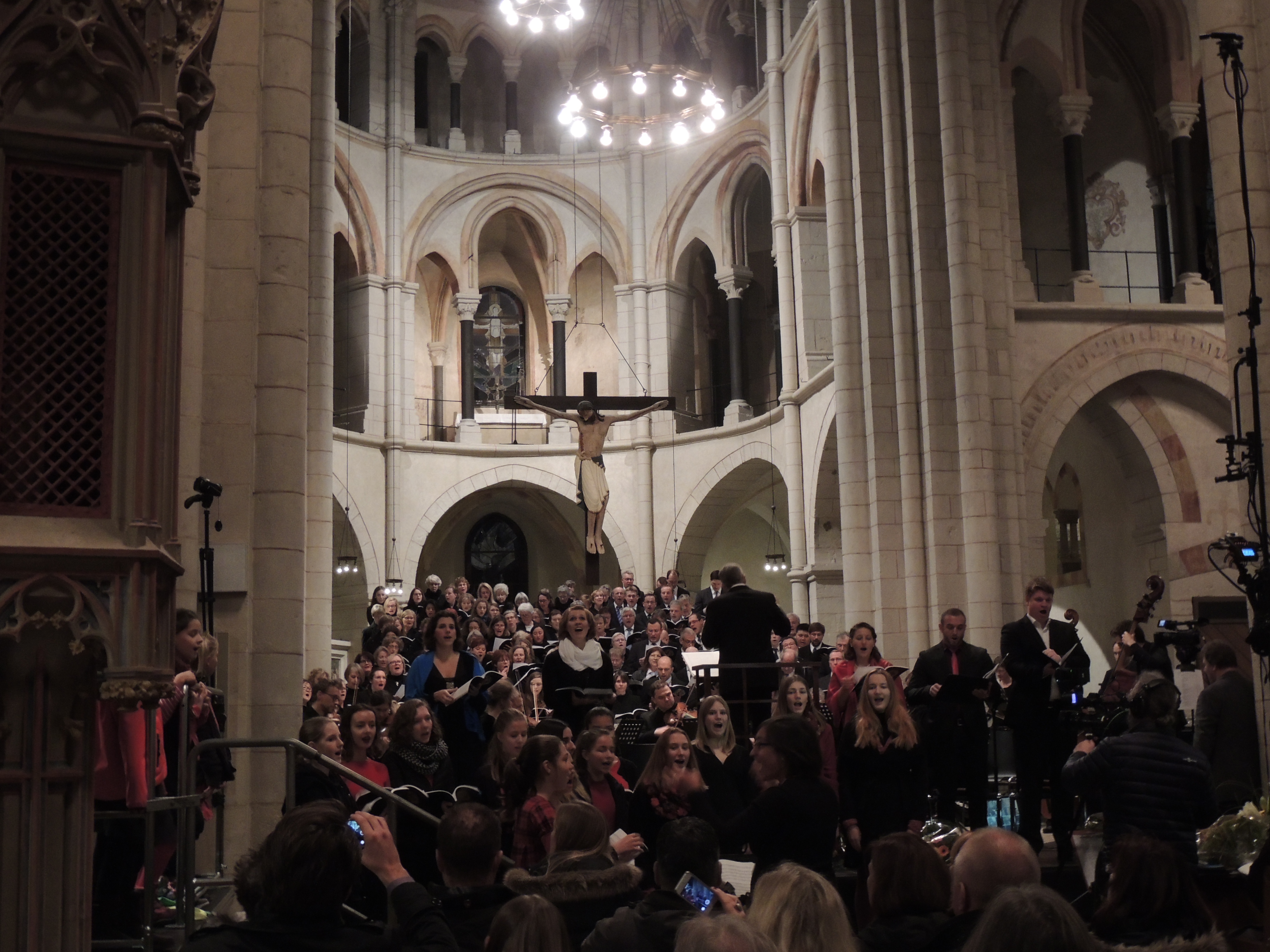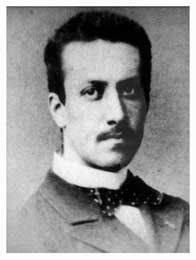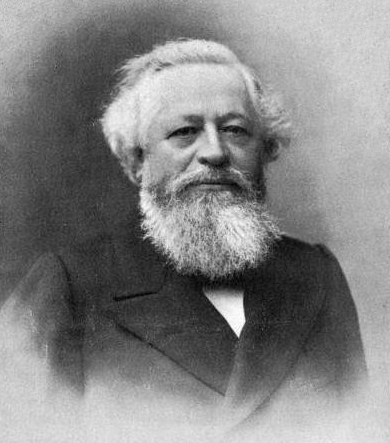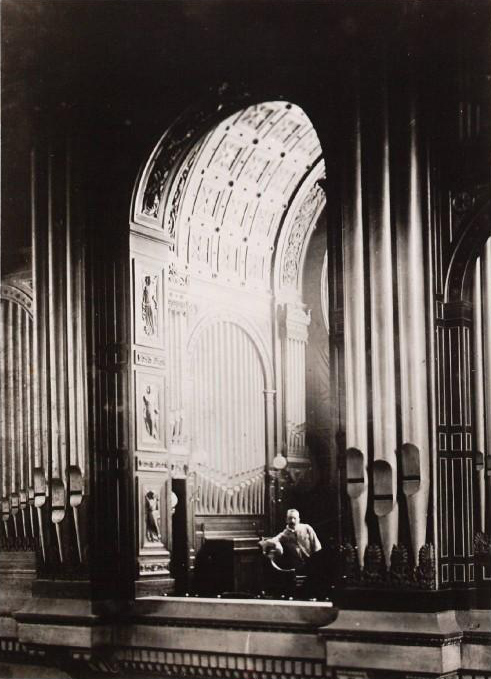|
Peter Reulein
Peter Reulein (born 1966) is a German composer, organ improviser, academic teacher and church musician, from 2000 at the church Liebfrauen in Frankfurt am Main. In 2016 he composed for the Catholic Diocese of Limburg the Franciscan oratorio ''Laudato si'''. Career Born in Frankfurt am Main, Reulein studied Catholic church music at the Hochschule für Musik und Darstellende Kunst Frankfurt am Main with Wolfgang Schäfer and Uwe Gronostay. After extended studies of organ improvisation with Daniel Roth in Paris, he won several national and international competitions in this field, for example in 1993 the competition of Belgian radio and the second prize and the public's prize at the Festival Europäische Kirchenmusik in Schwäbisch Gmünd. He continued his studies of interpretations with Ludger Lohmann, Ewald Kooiman and Wolfgang Rübsam. He took master classes with choral conductors such as Eric Ericson and Helmuth Rilling. From 1991, Reulein was the church musician at the ... [...More Info...] [...Related Items...] OR: [Wikipedia] [Google] [Baidu] |
Laudato Si' (oratorio)
is an oratorio composed in 2016 by Peter Reulein on a libretto by Helmut Schlegel. Subtitled (a Franciscan Magnificat), it includes the full Latin text of the Magnificat, expanded by writings of Clare of Assisi, Francis of Assisi and Pope Francis. The composer set it for five soloists, children's choir, Choralschola, mixed choir, symphony orchestra and organ. It was published in 2016 by the Dehm Verlag, and was premiered on 6 November 2016 at the Limburg Cathedral, conducted by the composer. History The work was commissioned by the Referat Kirchenmusik im Bistum Limburg (RKM), the division of church music of the Diocese of Limburg, to celebrate the organization's 50th anniversary. The work was requested to include many different musical groups and styles, to represent the activities of the church musicians in the diocese, such as Gregorian chant, choral singing of children and adults, organ solo music, and Neues Geistliches Lied. The text was planned to contain writings ... [...More Info...] [...Related Items...] OR: [Wikipedia] [Google] [Baidu] |
Heilig Geist, Frankfurt
Heilig Geist (Holy Spirit) is the name of a Catholic Church, Catholic church in the suburb Riederwald of Frankfurt am Main, Hesse, Germany. The parish church of the Riederwald congregation is part of the Roman Catholic Diocese of Limburg. On 1 January 2015 the parish became a ''Kirchort'' (church location), part of the parish ''St. Josef, Frankfurt''. Logos File:St. Josef-Frankfurt Pfarrei Logo+Text lang.png, Logo of the Parish of St. Josef Frankfurt am Main File:St. Josef-Frankfurt Heilig Geist Logo+Text kurz.png, Logo of the church location File:BistumLimburg-logo.svg, Logo of the Roman Catholic Diocese of Limburg History In 1923, the parish bought a property to build a church, designed by Martin Weber (architect), Martin Weber on a commissioned by minister Georg Heinrich Hörle. Groundbraking was on 13 July 1930. It was dedicated by Bishop Antonius Hilfrich on 20 September 1931. The church was severely damaged during World War II. It was restored after the war. Wil ... [...More Info...] [...Related Items...] OR: [Wikipedia] [Google] [Baidu] |
Francis Of Assisi
Giovanni di Pietro di Bernardone, better known as Saint Francis of Assisi ( it, Francesco d'Assisi; – 3 October 1226), was a mystic Italian Catholic friar, founder of the Franciscans, and one of the most venerated figures in Christianity. He was inspired to lead a life of poverty and itinerant preaching. Pope Gregory IX canonized him on 16 July 1228. He is usually depicted in a robe with a rope as belt. In 1219, he went to Egypt in an attempt to convert the sultan al-Kamil and put an end to the conflict of the Fifth Crusade. In 1223, he arranged for the first Christmas live nativity scene. According to Christian tradition, in 1224 he received the stigmata during the apparition of a Seraphic angel in a religious ecstasy. He founded the men's Order of Friars Minor, the women's Order of St. Clare, the Third Order of St. Francis and the Custody of the Holy Land. Once his community was authorized by the Pope, he withdrew increasingly from external affairs. Fr ... [...More Info...] [...Related Items...] OR: [Wikipedia] [Google] [Baidu] |
Magnificat
The Magnificat (Latin for " y soulmagnifies he Lord) is a canticle, also known as the Song of Mary, the Canticle of Mary and, in the Byzantine tradition, the Ode of the Theotokos (). It is traditionally incorporated into the liturgical services of the Catholic Church, the Eastern Orthodox churches, and the Anglican Communion. Its name comes from the incipit of the Latin version of the text. The text of the canticle is taken from the Gospel of Luke () where it is spoken by Mary upon the occasion of her Visitation to her cousin Elizabeth. In the narrative, after Mary greets Elizabeth, who is pregnant with John the Baptist, the latter moves within Elizabeth's womb. Elizabeth praises Mary for her faith (using words partially reflected in the Hail Mary), and Mary responds with what is now known as the Magnificat. The Magnificat is one of the eight most ancient Christian hymns and perhaps the earliest Marian hymn. Within the whole of Christianity, the canticle is most frequent ... [...More Info...] [...Related Items...] OR: [Wikipedia] [Google] [Baidu] |
Order Of Friars Minor
The Order of Friars Minor (also called the Franciscans, the Franciscan Order, or the Seraphic Order; postnominal abbreviation OFM) is a mendicant Catholic religious order, founded in 1209 by Francis of Assisi. The order adheres to the teachings and spiritual disciplines of the founder and of his main associates and followers, such as Clare of Assisi, Anthony of Padua, and Elizabeth of Hungary, among many others. The Order of Friars Minor is the largest of the contemporary First Orders within the Franciscan movement. Francis began preaching around 1207 and traveled to Rome to seek approval of his order from Pope Innocent III in 1209. The original Rule of Saint Francis approved by the pope disallowed ownership of property, requiring members of the order to beg for food while preaching. The austerity was meant to emulate the life and ministry of Jesus Christ. Franciscans traveled and preached in the streets, while boarding in church properties. The extreme poverty required ... [...More Info...] [...Related Items...] OR: [Wikipedia] [Google] [Baidu] |
Helmut Schlegel
Helmut Alfons Schlegel (born 15 May 1943) is a German Franciscan, Catholic priest, meditation instructor, author, librettist and songwriter. He is known for writing new spiritual songs ( Neues Geistliches Lied), set to music by various composers. Career Born Helmut Alfons Schlegel in Riedlingen, he grew up on his parents' farm in Upper Swabia and attended boarding schools of the Franciscans in Riedlingen and in Rottweil. He felt a connection to Francis of Assisi and joined the Franciscan Order. Then he studied philosophy and theology in Monastery Gorheim in Sigmaringen, Monastery Frauenberg in Fulda and Munich and was ordained priest in 1969 in Fulda. An extra-occupational course for meditation and retreat accompanist as well as in meaning-oriented psychology (Logotherapy) complemented his education. Schlegel worked for ten years in Wiesbaden and in other places as chaplain and as minister for young people (''Jugendpfarrer''). From 1988 he directed the ''Franziskanisches Zent ... [...More Info...] [...Related Items...] OR: [Wikipedia] [Google] [Baidu] |
Limburger Dom Oratorium Laudato Si 06112016
Limburger (in southern Dutch contexts Rommedoe, and in Belgium Herve cheese) is a cheese that originated in the Herve area of the historical Duchy of Limburg, which had its capital in Limbourg-sur-Vesdre, now in the French-speaking Belgian province of Liège. The cheese is especially known for its strong smell caused by the bacterium ''Brevibacterium linens''. Herve has been produced since the 15th century. History and geographic origins The Herve name has become the modern European protected name for the cheese, while the Limburger name is used for the same style when made in other regions. Herve cheese, or "Fromage de Herve", is still produced in the territory of the old Duchy of Limburg, in Belgium, where it has been produced since the 15th century. Herve is located near Liège, and the borders separating Belgium from the Netherlands and Germany. The "Land of Herve" is a hilly area between the Vesdre and Meuse rivers. The duchy existed until the French Revolution as a ... [...More Info...] [...Related Items...] OR: [Wikipedia] [Google] [Baidu] |
Charles-Marie Widor
Charles-Marie-Jean-Albert Widor (21 February 1844 – 12 March 1937) was a French organist, composer and teacher of the mid-Romantic era, most notable for his ten organ symphonies. His Toccata from the fifth organ symphony has become one of the best known and most often performed works for organ. As of 2022, he is the longest-serving organist of Saint-Sulpice in Paris, a role he held for 63 years (January 1870 – 31 December 1933). He also was organ professor at the Paris Conservatory from 1890 to 1896 (following César Franck) and then he became professor of composition at the same institution, following Théodore Dubois. Widor was a prolific composer, writing music for organ, piano, voice and ensembles. Apart from his ten organ symphonies, he also wrote three symphonies for orchestra and organ, several songs for piano and voice, four operas and a ballet. He was one of the first composers to use the term "symphony" for some of his organ compositions, helped in this by the o ... [...More Info...] [...Related Items...] OR: [Wikipedia] [Google] [Baidu] |
Alexandre Guilmant
Félix-Alexandre Guilmant (; 12 March 1837 – 29 March 1911) was a French organist and composer. He was the organist of La Trinité from 1871 until 1901. A noted pedagogue, performer, and improviser, Guilmant helped found the Schola Cantorum de Paris. He was appointed as Professor of Organ at the Paris Conservatoire in 1896. Biography Guilmant was born in Meudon. A student first of his father Jean-Baptiste and later of the Belgian master Jacques-Nicolas Lemmens, he became an organist and teacher in his place of birth. In 1871 he was appointed to play the organ regularly at la Trinité church in Paris, and this position, ''organiste titulaire'', was one he held for 30 years.Ochse, Orpha Caroline (1994), ''Organists and Organ Playing in Nineteenth-Century France and Belgium'', Indiana University Press, pp. 195–96, Guilmant was known for his improvisations, both in the concert and church setting. His inspiration came from gregorian chants, and he was greatly noted amon ... [...More Info...] [...Related Items...] OR: [Wikipedia] [Google] [Baidu] |
Camille Saint-Saëns
Charles-Camille Saint-Saëns (; 9 October 183516 December 1921) was a French composer, organist, conductor and pianist of the Romantic music, Romantic era. His best-known works include Introduction and Rondo Capriccioso (1863), the Piano Concerto No. 2 (Saint-Saëns), Second Piano Concerto (1868), the Cello Concerto No. 1 (Saint-Saëns), First Cello Concerto (1872), ''Danse macabre (Saint-Saëns), Danse macabre'' (1874), the opera ''Samson and Delilah (opera), Samson and Delilah'' (1877), the Violin Concerto No. 3 (Saint-Saëns), Third Violin Concerto (1880), the Symphony No. 3 (Saint-Saëns), Third ("Organ") Symphony (1886) and ''The Carnival of the Animals'' (1886). Saint-Saëns was a musical prodigy; he made his concert debut at the age of ten. After studying at the Paris Conservatoire he followed a conventional career as a church organist, first at Saint-Merri, Paris and, from 1858, La Madeleine, Paris, La Madeleine, the official church of the Second French Empire, Fren ... [...More Info...] [...Related Items...] OR: [Wikipedia] [Google] [Baidu] |
Léon Boëllmann
Léon Boëllmann (; 25 September 1862 – 11 October 1897) was a French composer, known for a small number of compositions for organ. His best-known composition is '' Suite gothique'' (1895), which is a staple of the organ repertoire, especially its concluding Toccata. Life Boëllmann was born in Ensisheim, Haut-Rhin, Alsace, the son of a pharmacist. In 1871, at the age of nine, he entered the École de Musique Classique et Religieuse (L'École Niedermeyer) in Paris, where he studied with its director, Gustave Lefèvre, and with Eugène Gigout. There, Boëllmann won first prizes in piano, organ, counterpoint, fugue, plainsong, and composition. After his graduation in 1881, Boëllmann was hired as "organiste de choeur" at the Church of St. Vincent de Paul in the 10th arrondissement of Paris, and six years later he became cantor and ''organiste titulaire'', a position he held until his early death, probably from tuberculosis. In 1885, Boëllmann married Louise, the daughter of G ... [...More Info...] [...Related Items...] OR: [Wikipedia] [Google] [Baidu] |
Arbeitskreis Kirchenmusik Und Jugendseelsorge Im Bistum Limburg
''Neues Geistliches Lied'' (, ''new spiritual song''), abbreviated NGL, is a music genre of songs in German intended for church usage, and based on contemporary lyrics and with music by contemporary composers. History The idea to reach young people by new songs for church services began in the 1950s. The first song in the genre was in 1955 ''Seigneur, mon ami'' by Père Duval who performed his religious chansons at the Protestant church assembly ''Kirchentag'' in 1962. Christians looked for an expression for reformation of thoughts and liturgy in the churches. The Protestant Evangelische Akademie Tutzing organised competitions, initiated by the minister for students (''Studentenpfarrer'') in Munich, Günther Hegele. The first competition in 1962 received 996 entries, the first prize went to " Danke" with text and music by Martin Gotthard Schneider. "Stern über Bethlehem" was written by Alfred Hans Zoller for the third competition in 1964, and became a common song of the s ... [...More Info...] [...Related Items...] OR: [Wikipedia] [Google] [Baidu] |







